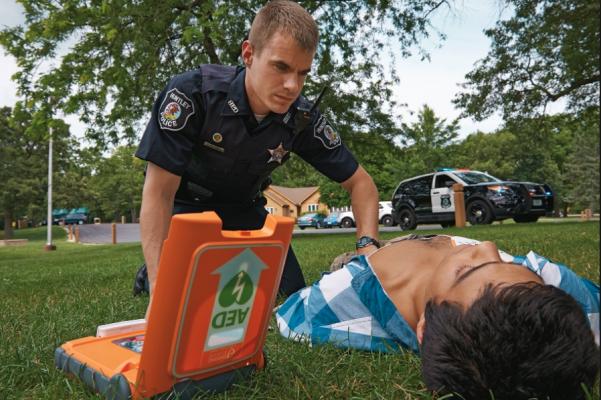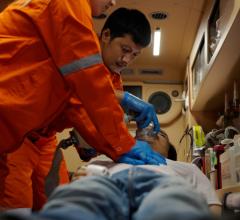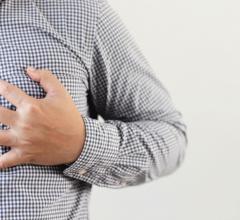
March 12, 2019 – Out-of-hospital cardiac arrest was the third leading cause of “health loss due to disease” in the U.S. behind ischemic heart disease and low back/neck pain in 2016, according to new research. The findings were published in Circulation: Cardiovascular Quality and Outcomes, an American Heart Association (AHA) journal.
This study is the first to estimate disability-adjusted life years (DALY) – which measures the sum of years of life lost prematurely and years lived with disability due to a disease – among those who experienced non-traumatic out-of-hospital cardiac arrest in the United States.
Cardiac arrest is an abrupt loss of the heart’s ability to pump, which leads to death within minutes if not treated. Its effect on years lost to premature death and disability is currently unknown.
Using the national Cardiac Arrest Registry to Enhance Survival (CARES) database, researchers examined 59,752 cases of adult, non-traumatic, Emergency Medical Services (EMS)-treated out-of-hospital cardiac arrest from 2016.
Researchers found:
-
Disability-adjusted life year rates for out-of-hospital cardiac arrest were 1,347 per 100,000 individuals, ranking it as the third leading cause of health loss due to disease in the U.S. behind ischemic heart disease (2,447) and low back and neck pain (1,565);
-
Individuals who experienced out-of-hospital cardiac arrest lost an average of 20.1 healthy years; and
-
At the national level, this resulted in 4.3 million healthy life years lost, representing 4.5 percent of total DALY in the country.
Researchers also measured the effects of bystander intervention – cardiopulmonary resuscitation (CPR) and automated external defibrillator (AED) application – on the disease burden of out-of-hospital cardiac arrest. Focusing their analysis on a subpopulation of bystander-witnessed out-of-hospital cardiac arrest events, researchers found that on a national level:
-
Survival to hospital discharge was higher for those who received bystander CPR than for those who did not (21.5 percent vs. 12.9 percent);
-
Bystander CPR alone was associated with 25,317 healthy life years saved; and
-
CPR paired with AED defibrillation was associated with 35,407 healthy life years saved.
Researchers noted that women tended to have higher DALY values than men, as well as Caucasians compared to African Americans. Additionally, Hispanic race was associated with higher DALY compared with Caucasians.
“Many cardiac arrests occur outside of the hospital, and our results show that bystander interventions reduce death and disability, underscoring the importance of bystander CPR and AED education, as well as national cardiac arrest surveillance,” said Ryan A. Coute, DO, lead study author and emergency medicine resident at the University of Alabama at Birmingham.
Researchers hope that this study may help focus public health policies, resources and future research on resuscitation science.
“Cardiac arrest is unique because survival is dependent on the timely response of bystanders, medical dispatch, EMS personnel, physicians and hospital staff,” Coute said. “We hope that the results of our study provide an opportunity to emphasize the fact that ‘cardiac arrest’ and ‘heart attack’ are not synonymous. Our results may also help inform funding agencies and policy makers regarding how to best utilize limited resources to improve public health.”
For more information: www.ahajournals.org/journal/circoutcomes
Reference
1. Coute R.A., Nathanson B.H., Panchal A.R., et al. Disability-Adjusted Life Years Following Adult Out-of-Hospital Cardiac Arrest in the United States. Circulation: Cardiovascular Quality and Outcomes, March 12, 2019. https://doi.org/10.1161/CIRCOUTCOMES.118.004677


 January 30, 2024
January 30, 2024 









